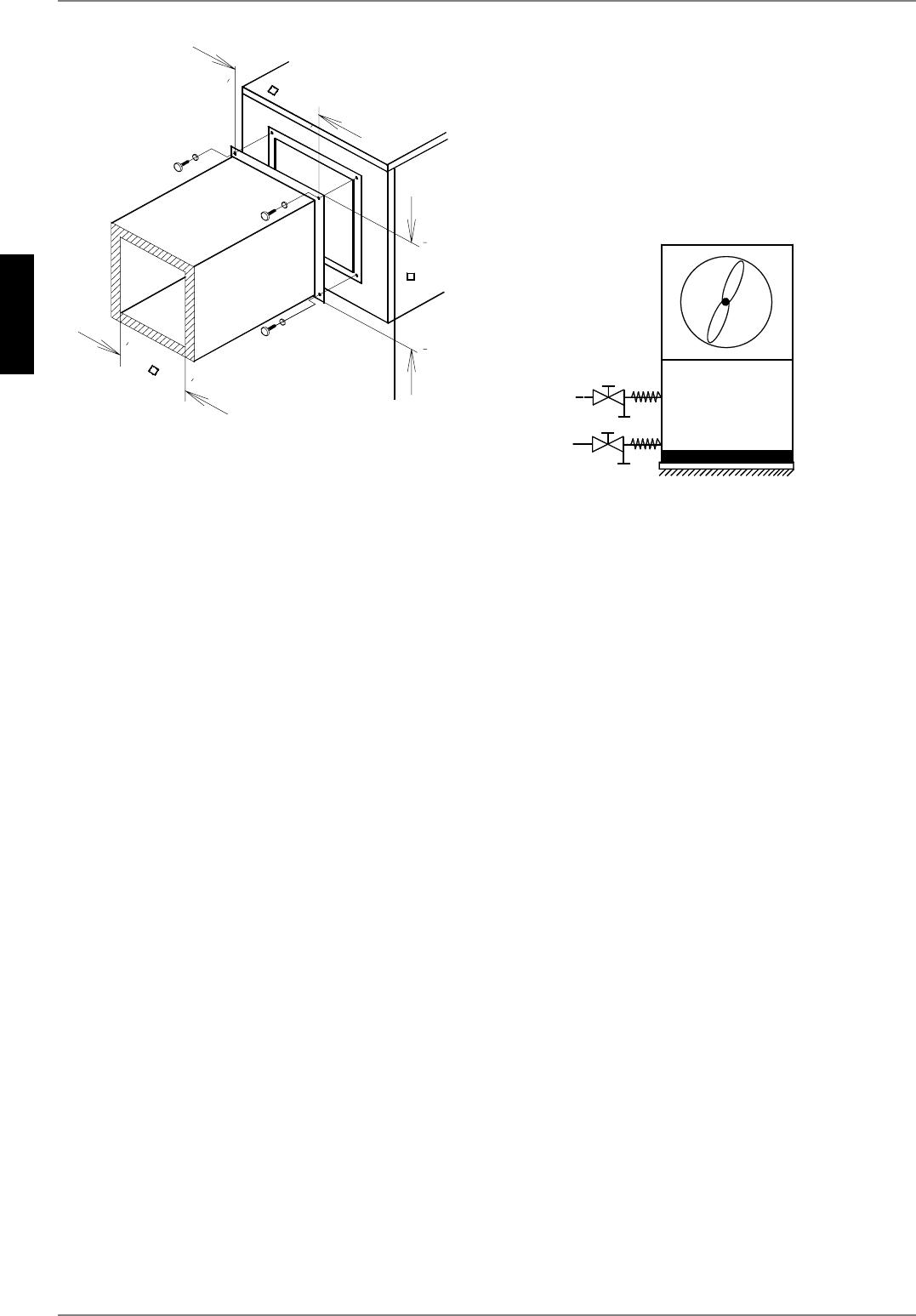
E-6
English
6.3
6.3 Heating System Connection
The heating system connections on the heat pump have a
1" external thread. Use a spanner to firmly grip the transitions
when connecting the heat pump.
Before connecting the heating water system to the heat pump,
the heating system must be flushed to remove any impurities,
residue from sealants, etc. Any accumulation of deposits in the
liquifier could cause the heat pump to completely break down.
For systems in which the heating water flow can be shut off via
the radiator or thermostat valves, an overflow valve must be in-
stalled in a heating bypass behind the heat pump by the cus-
tomer. This ensures a minimum heating water flow rate through
the heat pump and helps to avoid faults.
Once the heating system has been installed, it must be filled, de-
aerated and pressure-tested.
Minimum heating water flow rate
The minimum heating water flow rate through the heat pump
must be assured in all operating states of the heating system.
This can be accomplished, for example, by installing either a
manifold without differential pressure or an overflow valve. The
procedure for adjusting an overflow valve is described in the
Chapter Start-Up.
Antifreeze (frost protection)
A method of manual drainage (see illustration) should be pro-
vided for heat pumps which are exposed to frost. The antifreeze
function of the heat pump controller is active whenever the con-
troller and the heat circulating pump are ready for operation. If
the heat pump is taken out of service or in the event of a power
failure, the system has to be drained. The heating circuit should
be operated with a suitable antifreeze if heat pump systems are
implemented in buildings where a power failure can not be de-
tected (holiday home).
6.4 Electrical Connection
It is not necessary to open the device to establish the electrical
connection.
The heat pump is connected to the power supply using the ap-
prox. 5 m long preinstalled mains cable.
A disconnecting device with a contact gap of at least 3 mm (e.g.
utility blocking contactor or power contactor) as well as a 1-pole
circuit breaker must be installed in the heat pump power supply
by the customer (tripping current in compliance with the Device
Information).
The control voltage is supplied via the control line and the heat
pump controller.
The heat pump controller has a 230 V AC-50 Hz power supply.
Connect the controller in compliance with its own operating in-
structions (16 A fuse).
The preinstalled, 7-m long control line is connected to the heat
pump controller using both rectangular plug connectors and sin-
gle-core wires (integral return flow sensor). The heat pump con-
troller is a mandatory part of the control system. More detailed in-
formation can be found in the operating instructions of the heat
pump controller.
See Appendix Circuit Diagrams for detailed information.
PLQ
0[
PD[


















